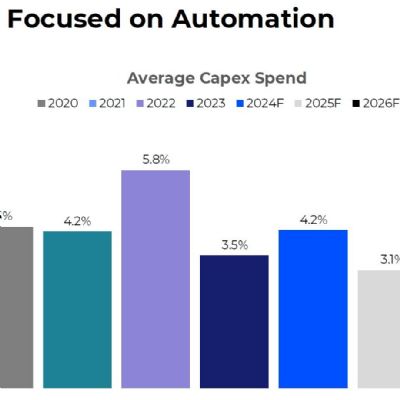Know Your Costs: Don't Chase Low-Margin Work
March 1, 2013Comments
Each year, Plante Moran prepares the PMA (Precision Metalforming Association) Benchmarking Report for the metalforming industry, to aid management in evaluating industry trends and business performance. According to the 2012 report, the average reported EBITDA (earnings before interest, taxes, depreciation and amortization) was 8.5 percent, a stark contrast to the most profitable organizations, who reported an EBITDA of 19.1 percent.
The question, then, for managers of most metalforming companies is:
How do I get from here to there?
Although many factors contribute to answering that question, we’ll start here with understanding product and process costs.
Understanding Costs
It’s important to understand your cost structure and the factors that drive it. When company managers know where the company makes money, where it does not and why, managers can begin to make improved strategic and operational decisions.
Begin by assessing the level of profitability for each product sold, but don’t stop there. Be sure to also layer in customer-level costs to assess overall customer profitability.
To understand profitability, managers must recognize the major drivers of product-level and customer-level costs. Typical drivers of product-level costs include:
• Production hours (labor and machine) by work center. Shop must establish appropriate cost rates for technology-differentiated work centers.
• Product/process complexity. Significant process costs, such as costs for quality assurance, manufacturing, engineering and program launch, are driven more by product and process complexity than by production hours or volume. Many manufacturers do a poor job of accurately reflecting these costs, typically leading to low-volume, complex products being subsidized by other products.
• Volume variation. In many manufacturing companies, significant batch-related activities, such as machine setup and order entry and scheduling, mean that volume variation can be a key determinant of product cost and profitability.
• Utilization. Being relatively capital-intensive, profitability in the metalforming industry is significantly impacted by utilization, yet few companies spend adequate time identifying and managing the cost of excess capacity. So as not to unfairly penalize current products and customers, shops must identify and strip out excess capacity costs prior to assigning costs to products and customers.
• Inventory and material-handling requirements. In some cases, products may require significant inventory investment, such as those using special materials with long lead times. Products also may require special handling and care during and after the manufacturing process.
• Tool and die support. We know that the requirements of tool maintenance and support can vary significantly from one part to the next, even if the parts are processed in the same machine center. Although production hours on the tool certainly impact maintenance requirements, so too do tool complexity and the number of critical features and dimensions, as well as the type of material being processed. However, instead of costing tooling support direct to parts based on their unique needs, many companies bury this cost in their machine overheads, thereby under-costing tooling-intensive parts and over-costing other parts.
Customer-level drivers include:
• Schedule predictability. Frequent or significant changes in demand schedules, particularly those occurring late in the process when it’s more difficult and costly to react, result in significant disruption to an organization. These include rescheduling, interrupting production runs and expediting.
• Customer-service requirements. These requirements can vary widely by customer and include technology requirements (EDI, RFID, etc.), customer-specific reporting, and general attention/hand-holding.









